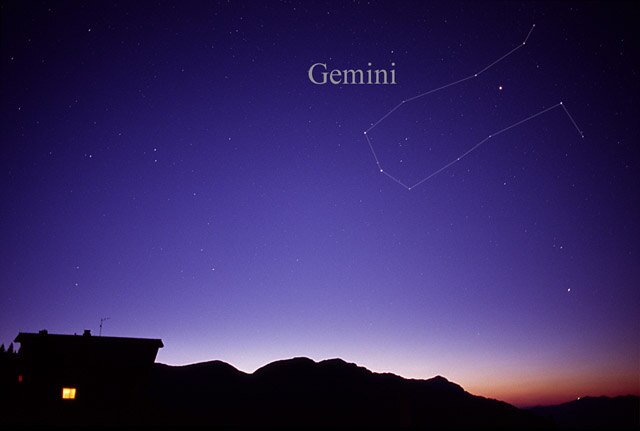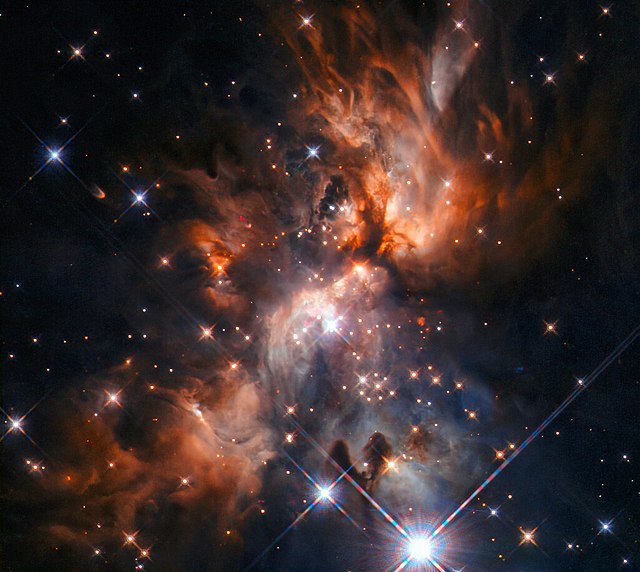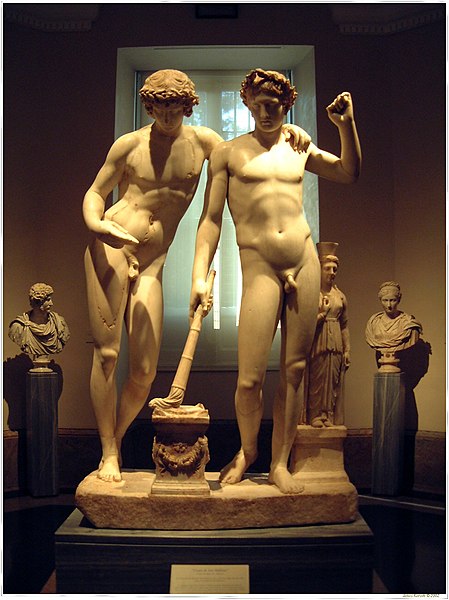Messier 35 or M35, also known as NGC 2168 or the Shoe-Buckle Cluster, is a relatively close open cluster of stars in the west of Gemini, at about the declination of the sun when the latter is at June solstice. It was discovered by Philippe Loys de Chéseaux around 1745 and independently discovered by John Bevis before 1750. It is scattered over part of the sky almost the size of the full moon and is 2,970 light-years away. The compact open cluster NGC 2158 lies directly southwest of it.
Messier 35 with NGC 2158 at lower right Credit: 2MASS/NASA.
Gemini is one of the constellations of the zodiac and is located in the northern celestial hemisphere. It was one of the 48 constellations described by the 2nd century AD astronomer Ptolemy, and it remains one of the 88 modern constellations today. Its name is Latin for twins, and it is associated with the twins Castor and Pollux in Greek mythology. Its old astronomical symbol is (♊︎).
The constellation Gemini as it can be seen with the unaided eye, with added connecting lines.
AFGL 5180 - Through the Clouds.
Gemini as depicted in Urania's Mirror, a set of constellation cards published in London c.1825.
Sculpture showing Castor and Pollux, the legend behind the third astrological sign in the Zodiac and the constellation of Gemini





